
‘What do I still hear, once it’s quiet again?’
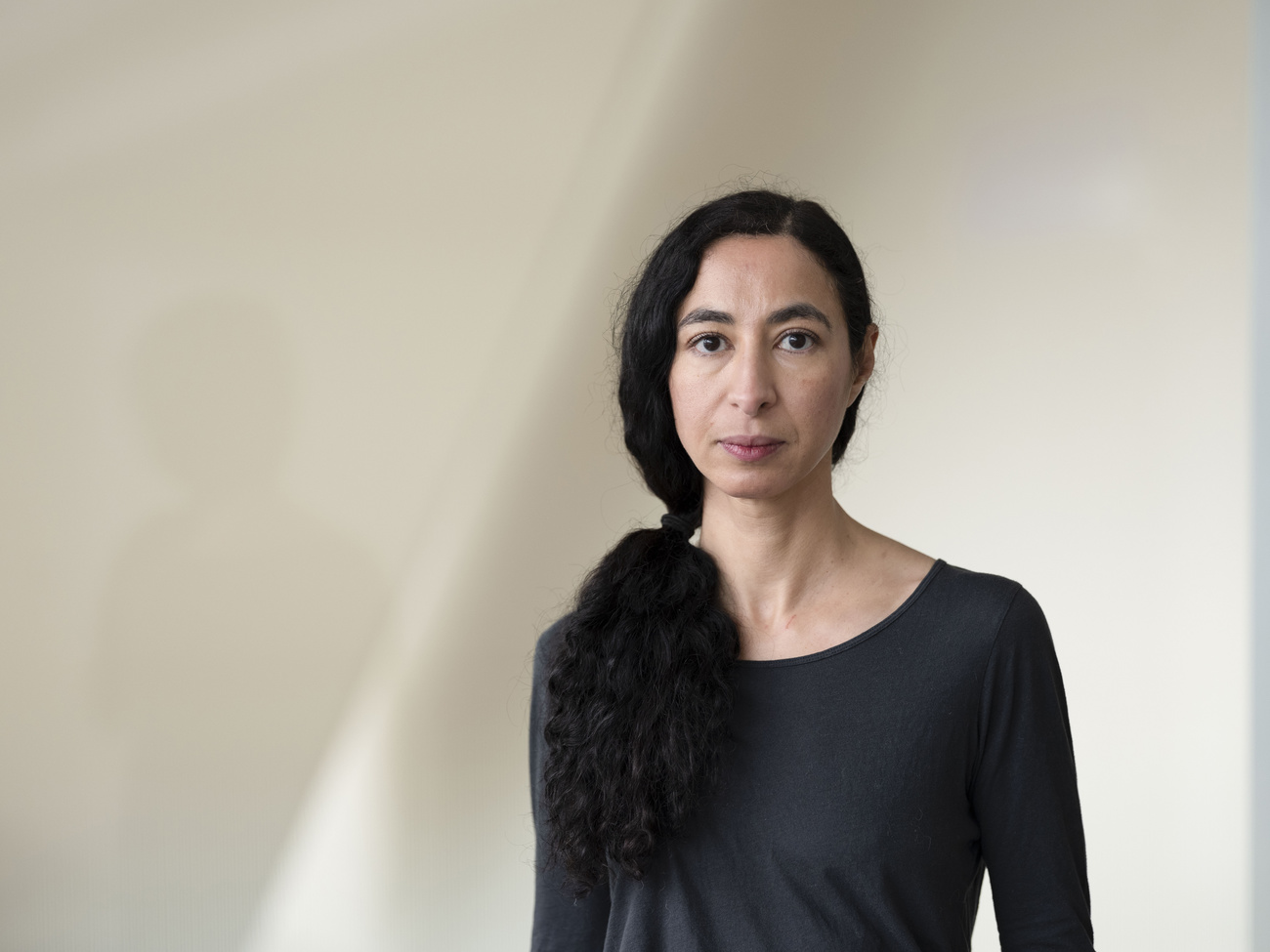
Moroccan-born French artist Latifa Echakhch is representing Switzerland at the Biennale art exhibition in Venice. For her, memories are never just personal and there is a richness in not being tied to a particular identity.
The story begins with a piano. “I wanted to learn to play it,” she says. A friend replied: “For that you need a piano, and for the piano a home, and for the home a country.” She decided on Switzerland.
Echakhch, 47, has lived for ten years in Vevey, overlooking Lake Geneva, with her children. It does not matter if it was for love of the piano or some other reason – it is a nice story. And it brings us directly to the Swiss Pavilion in Venice, where she has trodden a new path, a musical one.
“I felt the strong need to regenerate my work and to understand how I have been working,” Echakhch says.
There have been few breaks in her career so far. Not long after she completed her art studies in France in 2000 – she studied in Grenoble, Cergy (Paris) and Lyon – she found success with her large-scale installations. Every year she was in numerous group exhibitions, and solo exhibitions too. In 2013 she won the Prix Marcel Duchamp, the main French art award, and in 2015 the Zurich Art Prize. Most recently she has joined the Pace Gallery, one of the most powerful players in the global art market. Her solo show at the Venice Biennale is regarded as a dive into the deeper waters of international art.
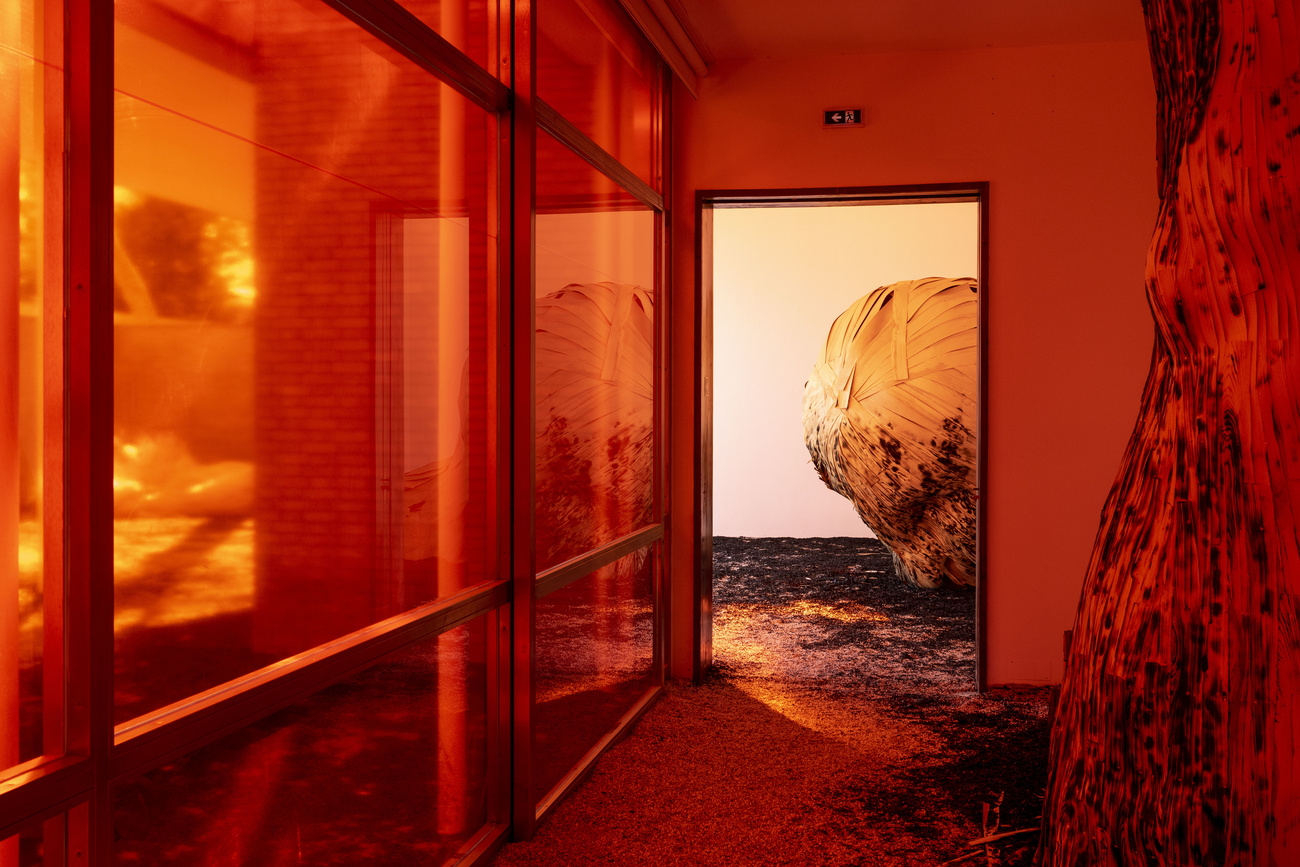
“Clearly, the Biennale in Venice is not the ideal moment to question yourself,” Echakhch admits. She could have stuck with tried-and-tested approaches, but she used the project to explore unfamiliar territory. “Instead of working as a visual artist, I acted as if I were a musician.”
In the two years of preparation, she studied musical instruments and theory and took singing lessons. It was not her intention to appear in front of the public as a musician but to deal with some basic questions. “What happens in our bodies when we play or hear music? How do we experience time in music? And how can I use these perceptions in visual art?”
Sculptures made of time
Music was present in her wide-ranging work long before the Biennale. In 2012 she created her first “Tambours”, circular canvases two metres in diameter, on which she dripped black ink. The title of each work told the viewer of the length of time taken to make it.
“As these ink drops hit the canvas, it sounded like a drumbeat, so I called the works that. Originally, I was not thinking of any musical character per se. I was interested in the duration of the drips. Yet the result was music.”

Before Echakhch shifted her focus to music, it was the passage of time that really interested her and gave her works a performative character.
In works like the fresco “Cross Fades” or “The Sun and the Set Series” she covered the painting with a layer of cement, only to scratch this off again in several places so as to expose parts of the painting. The pieces of cement lay as a residue on the floor.
When she creates these works, the artist is alone; they are not performances for an audience. Yet the visibility of the process gives these art works a certain time depth and opens up narrative vistas. What has happened? Is the painting coming into being or is it disappearing?
What do we hear, when it’s quiet again?
For her installation at the Swiss Pavilion Echakhch has intensified this subject-matter. She has brought in the expertise and experience of composer and percussionist Alexandre Babel as well as that of art historian and one-time DJ Francesco Stocchi.
“The Concert” is the name of the installation, which will finally be revealed to the public on Saturday. People who expect a concert-like experience will be disappointed. Rather, visitors are intended to feel as they do after a concert: when one is still filled with the music, but it is already becoming fragments of remembrance; when those fragments echo in our memory. A refrain, a violin part, a percussion passage, but also visual impressions like a light show.
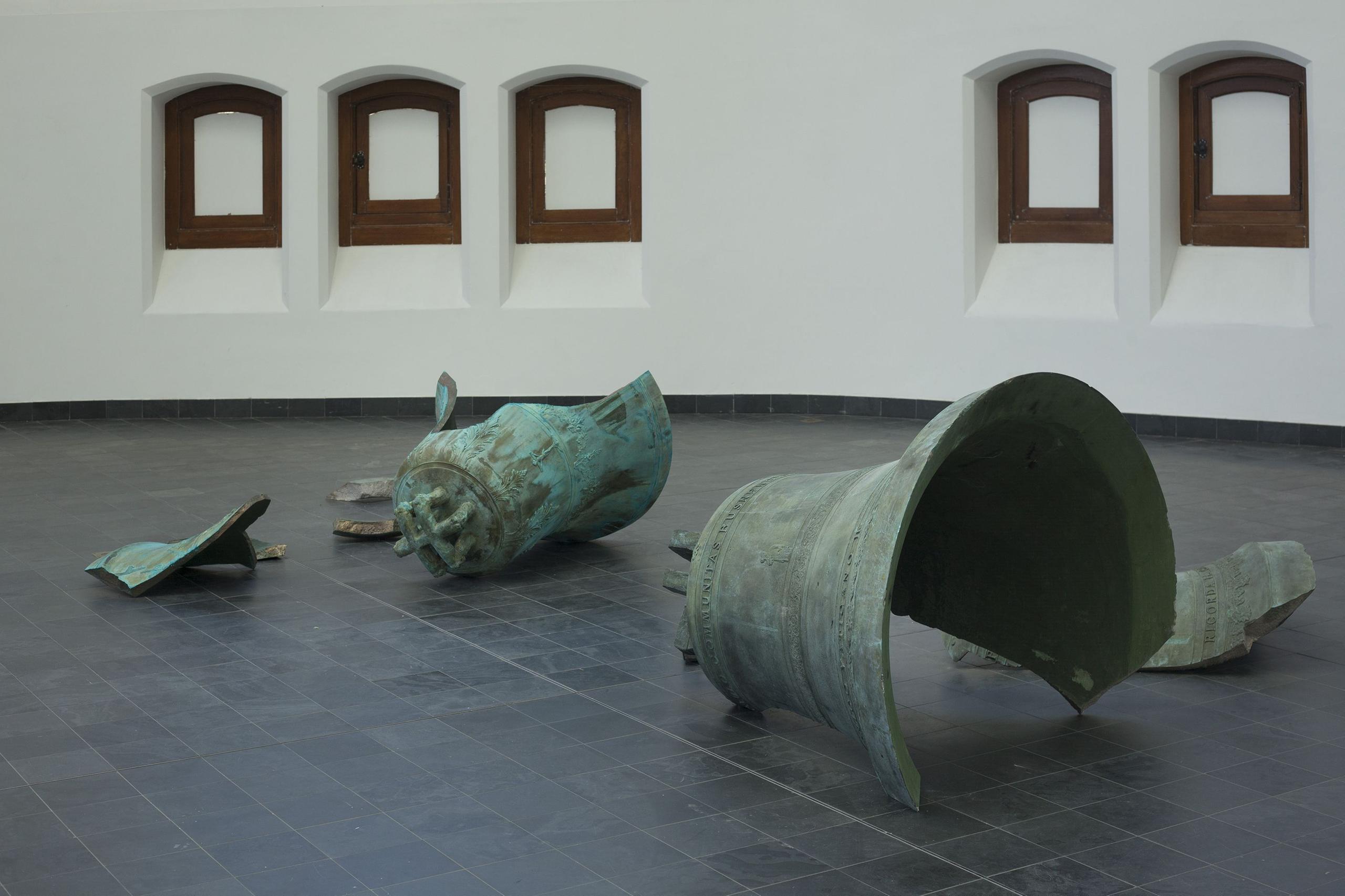
“In a concert, you are never alone,” Echakhch emphasises. “You are part of a mass of people, moving to the same rhythm. At the end of the concert you are alone again. I have my own memory, and my memories of this music. What do I still hear, when it’s quiet again?”
At this point, reconstruction of the past begins in the individual narrative. In the loss that the non-recoverability of time implies, Echakhch seems to find a creative power and a great freedom.
“Of course there is melancholy in my work. But the time lag enables us to stand apart from things and feel them in other ways.”

The common ground in personal remembrance
Echakhch works with personal memories over and over again. She has snapshots from her travels painted onto gigantic theatre curtains and links them to personal mementos, which she covers in black ink.
“I use these things as a starting point for my memories. It’s not just a matter of my own story. We all have the feeling we are unique. But in reality, we have a great deal in common. A first love experience, for example, is nothing out of the ordinary. I try to understand my memories and feelings, to find common ground with other people.”
In this way, the personal becomes the political. Memories, as her history of immigration shows, are often linked with “Dispossessions”, as one group of works is called. When she came to Aix-les-Bains in eastern France at the age of three, her parents stopped speaking Moroccan Arabic at home. All they wanted was to integrate themselves and their children completely, and they consented to the loss of their own culture as a part of this.
“What many people describe as positive multiculturalism was absolutely not multiculturalism for me. Like many immigrants, I experienced the discrepancy of belonging neither to one culture nor the other,” Echakhch recalls.
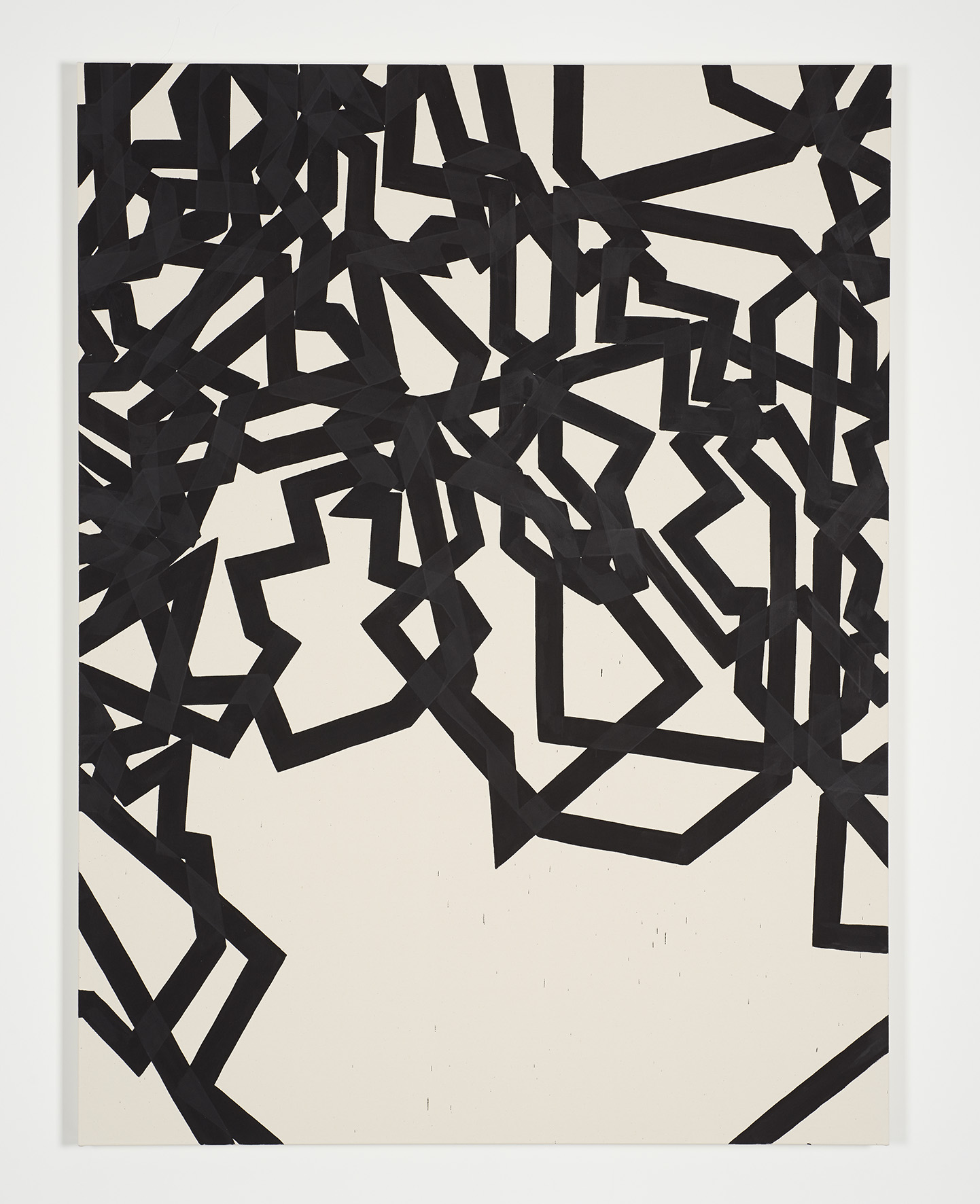
She gives expression to this disappearance of language in many of her works. In the series of drawings “Noise and Missing Words” from 2018 for example, all that remains from the Arabic poetic texts is their diacritic markings.
In 2007 came the first work in the group “Dérives”, in which she came to grips with the ornamental techniques of Islamic art and architecture. She painted a huge asymmetrical pattern on the ground with tar, so that it was impossible to grasp the whole design at once. Later she developed the theme further in acrylic on canvas. The lines seem like traces left by the artist, whose path to her cultural roots becomes a meander, like the aimless drifting (Dérive) through which the Situationists attempted to explore the city in the 1960s.
The richness of not representing anything
At one time Echakhch would have liked to have had a clear identity.
“I would have liked to have been able to say, yes, I am a Moroccan, yes, I am French, or now, yes, I am Swiss. But it’s just not true. These days I find it a great richness not to represent anything, but to be everywhere and nowhere at once.”
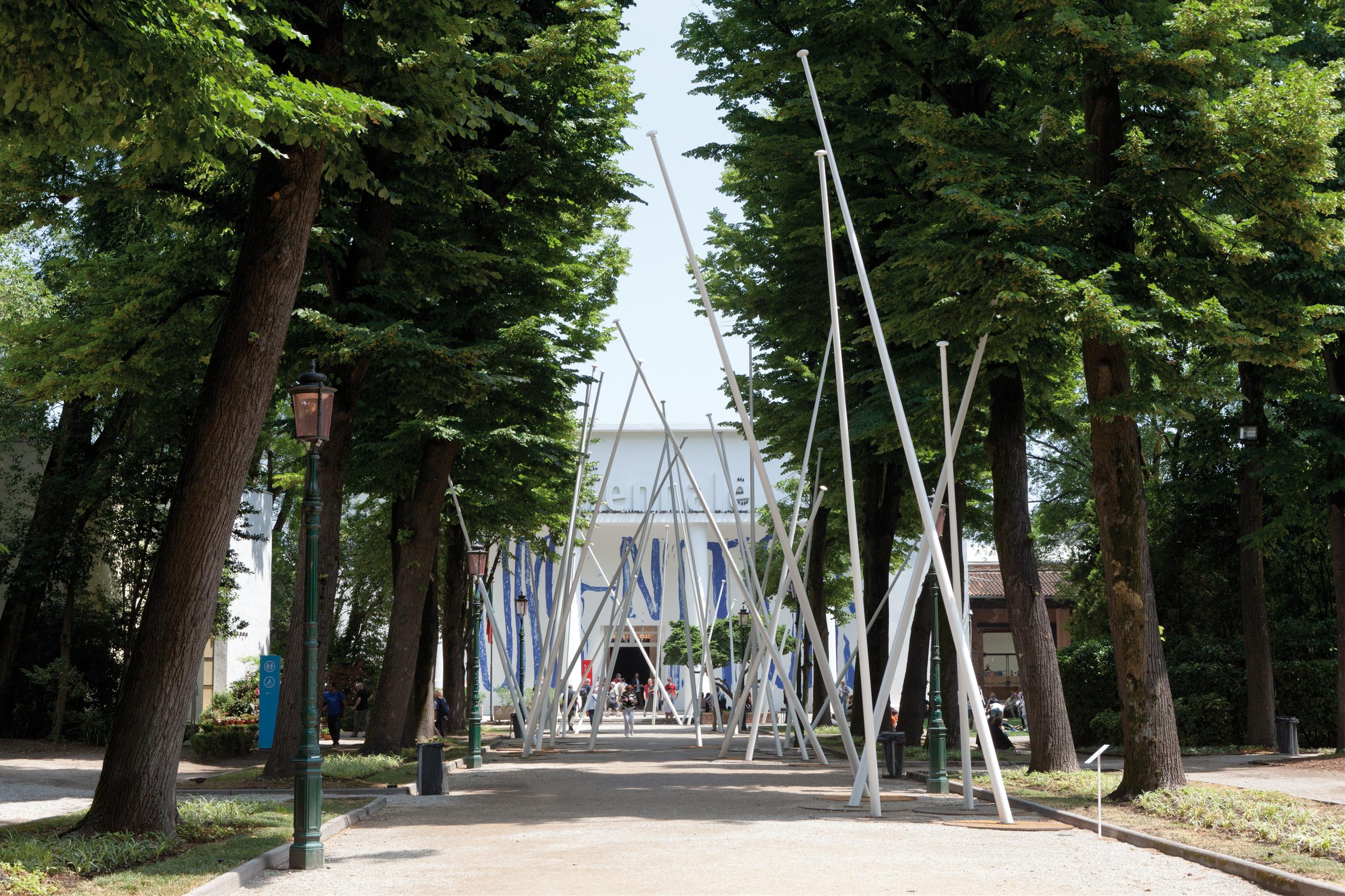
Already at the Venice Biennale in 2011 she commented on the idea of nationality with her prominently displayed work “Fantasia”. She lined the path through the Giardini with bare flagpoles standing in a crisscross pattern. Yet she is aware that her appearance as “representative of Switzerland” in the Swiss Pavilion has some meaning.
“I decided to live in Switzerland. It was not the immigration of my French parents, but my own. And apart from that, I belong to the history of all those foreign artists who have given Swiss culture its character.”
“The Concert” is not completely devoid of “real music”. It features a 21-minute piece of music recorded by Alexandre Babel in Berlin with a number of musicians.
“You hear music, the spaces in the Pavilion, the gravel in the Giardini, the echo of our conversations. The record compresses all our research over two years into a musical score,” Echakhch enthuses. “When I heard the record, I had the feeling I could recall everything I experienced in terms of revelation through sound in the past two years.”
Translated from German by Terence MacNamee

In compliance with the JTI standards
More: SWI swissinfo.ch certified by the Journalism Trust Initiative




























You can find an overview of ongoing debates with our journalists here . Please join us!
If you want to start a conversation about a topic raised in this article or want to report factual errors, email us at english@swissinfo.ch.